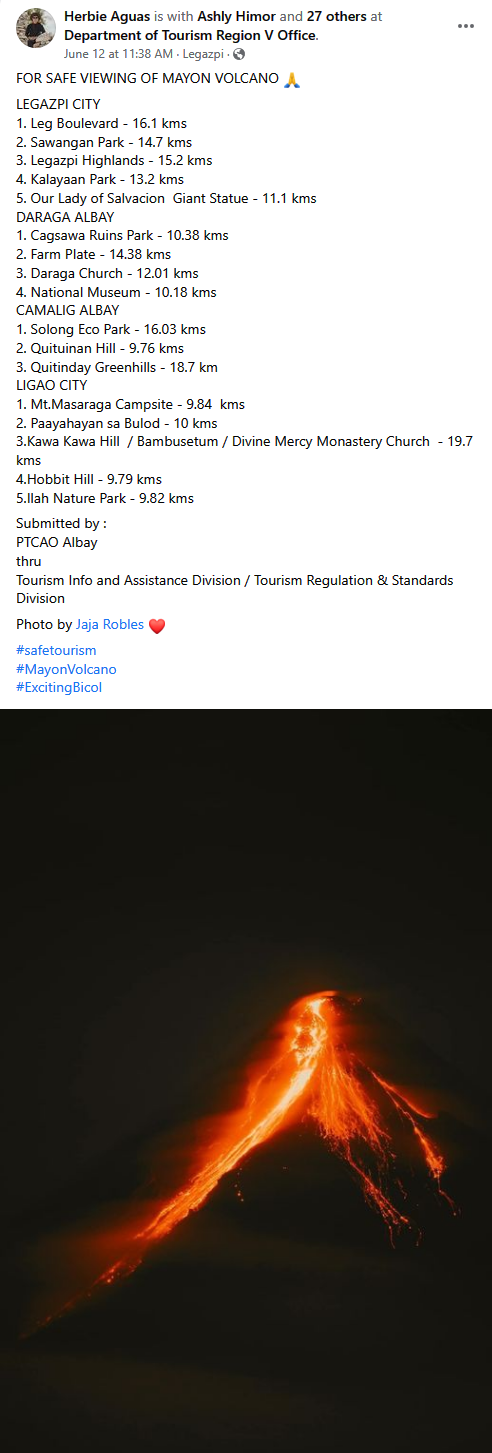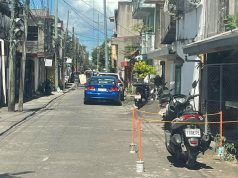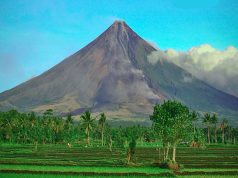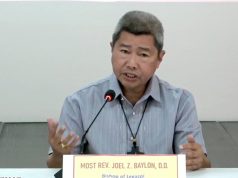
Disaster tourism?
This was what some Filipinos said after information detailing how to view the erupting Mayon Volcano circulated on social media.
Department of Tourism-Bicol Regional Director Herbie Aguas on Monday posted a list of sites that he said are where people can “safely” witness the stratovolcano as it actively spews lava on its effusive eruption.
His post was accompanied by a picture of Mount Mayon with orange lava flowing from its crater. It was taken by Facebook user Jaja Robles.
Aguas said the list was submitted by the Provincial Tourism, Culture and Arts Office–Albay (PTCAO-Albay) through the Tourism Info and Assistance Division or the Tourism Regulation and Standards Division.
The list compiles supposed viewing sites from the cities of Legazpi and Ligao, as well as the towns of Daraga and Camalig.
The nearest is Quituinan Hill, Camalig which has a distance of 9.76 kilometers, while the farthest is Ligao City’s Kawa-Kawa Hill, the Bambusetum, and the Divine Mercy Monastery Church at 19.7 kilometers.
Aguas’ post has reached a whopping number of 28,000 likes and reactions and over 5,300 shares so far.

The PTCAO-Albay also shared a similar list of “safe viewing sites” and acknowledged that “real threat and impending destruction may occur among Albayonos, especially those residing near the 6 to 9 km permanent danger zones.”
However, it claimed that locals are “known to be resilient in overcoming disasters and difficulties.”
In 2020, a senator called on Filipinos to “stop romanticizing Filipino resilience” and instead focus on implementing proactive solutions to respond to disasters.
Meanwhile, Aguas’ viral post was reported by a news outlet, which further gained the attention of Pinoys.
Some received the post positively, while others were critical of it. They argued that the public should help thousands of families displaced due to the volcanic unrest instead of promoting tourism.
“Yo, wtf is this? People’s lives are literally at risk and you’re promoting disaster tourism?” a Pinoy on Twitter said in response to the list of “safe viewing sites.”
“So, ayun… it’s official. DOT promotes disaster tourism. Nakakadismaya. Anyway, notice that the closest spots there are just a tad short of 10 km [kilometers] away from Mayon,” another online user wrote.
“If pumutok nang malakas iyan (talk about Alert Level 5, VEI 3-4), the tourists there would still be in peril,” he added, citing the Volcanic Explosive Index or the relative measure of the explosiveness of volcanic eruptions.
“Some f**ked up s*it from DOT. People are forced to leave their homes [and] their livelihood [and] we have a gov’t agency capitalizing natural disasters. What would they do if the situation [got] worse? Again, dagdag isipin pa ‘yang mga turistang ‘yan,” another Filipino wrote.
Others urged the public to donate to the evacuees instead.
“DOT naman [Diyos ko], ginawang tourist spot ang volcano eruption. Sana naman tumulong na lang kayo sa evacuees,” another Twitter user said.
“The [Department of Tourism] and the [people] running this country are advertising a tourism opportunity when THOUSANDS OF ALBAY FAMILIES AND RESIDENTS HAVE BEEN DISPLACED!!! [I] hate it here!! This gov’t is a joke!! [Please] donate to the displaced instead,” wrote a different Pinoy, sharing screengrabs of donation posts.
RELATED: Rundown: Where to donate funds, relief goods for Albay evacuees amid Mayon Volcano unrest
Disaster tourism refers to the act of visiting disaster-affected or disaster-related places or sites.
Another term associated with it is “dark tourism” wherein visitors “are making the worst parts of history a piece of their vacation, if not the entire point.”
“Dark tourism refers to visiting places where some of the darkest events of human history have unfolded. That can include genocide, assassination, incarceration, ethnic cleansing, war or disaster — either natural or accidental,” a Washington Report said.
Other experts argued that wanting to see a place where disaster has struck is not always a sign of insensitivity, according to ethics professor Patricia Illingworth of Northeastern University.
“Going and seeing what the people are suffering or seeing the situation, that then raises empathy or allows us to empathize” with the situation, she told Los Angeles Times.
Illingworth added, however, that “gawking” or staring openly in an unthinking way while in it “obviously isn’t a good idea.”
The best solution, experts said, is doing volunteer work as it offers people the opportunity to see what has happened while being of use to the people who need their help the most.
‘Maintain active awareness’
Last Sunday, the Department of Tourism released an advisory that alerted the public “to monitor current bulletins and maintain active awareness of local conditions when traveling to areas” near the Mayon and Taal Volcano.
Mayon Volcano was placed under Volcanic Alert Level 3, which means an “increased tendency towards hazardous eruption.”
RELATED: Phivolcs raises alert level at rumbling Mayon volcano after rockfall, quakes
The particular alert level also means that “magma is close to the crater.”
“If [the] trend is one of increasing unrest, eruption is possible within weeks. Extension of Danger Zone in the sector where the crater rim is low will be considered,” the Philippine Institute of Volcanology and Seismology (Phivolcs) said.
Meanwhile, Taal Volcano in Batangas is under Volcanic Alert Level 1 or in a state of “low-level unrest.”
The DOT in its advisory quoted Phivolcs, which had warned that the Mayon could have a “potential explosive activity within weeks or even days” due to its “magmatic eruption of a summit lava dome.”
“As such, human activities, including tourism-related activities including, but not limited, to mountain climbing, ATV tour, and any tourism promotion, are now strictly prohibited within the PDZ,” the tourism agency said in its advisory.
PDZ refers to the Permanent Danger Zone or the surrounding area closest to the volcano.
As of Sunday, June 11, the danger zone was expanded to a radius of seven kilometers. Residents living within this area were told to prepare for evacuation which could be “executed anytime.”
READ: Residents in for months-long displacement as Mayon volcano spews lava, gases
Phivolcs director Teresito Bacolcol said that the Mayon Volcano had started an “infusible eruption” on Sunday night which meant a “slow release of magma at the volcano edifice,” hence the lava flow.
He added that the agency is assessing the situation on a daily basis if it warrants raising the volcanic alert status to Level 4 from the current Alert Level 3.
Mayon’s Volcanic Alert Level 4 translates to “hazardous eruption imminent” in which “hazardous eruption is possible within days.”
It also means that the “extension of Danger zone to 8 km [8 kilometers] or more in the sector where the crater rim is low will be recommended.”
Mayon was raised to Alert Level 2 on June 5, which meant an “increasing unrest” was observed. It was heightened to Alert Level 3 on June 8.
Mayon is known as the most active volcano in the country, having erupted at least 50 times on record.
It last erupted in 2018 through a Strombolian eruption that displaced thousands of residents and blanketed nearby towns in thick layers of ash.









